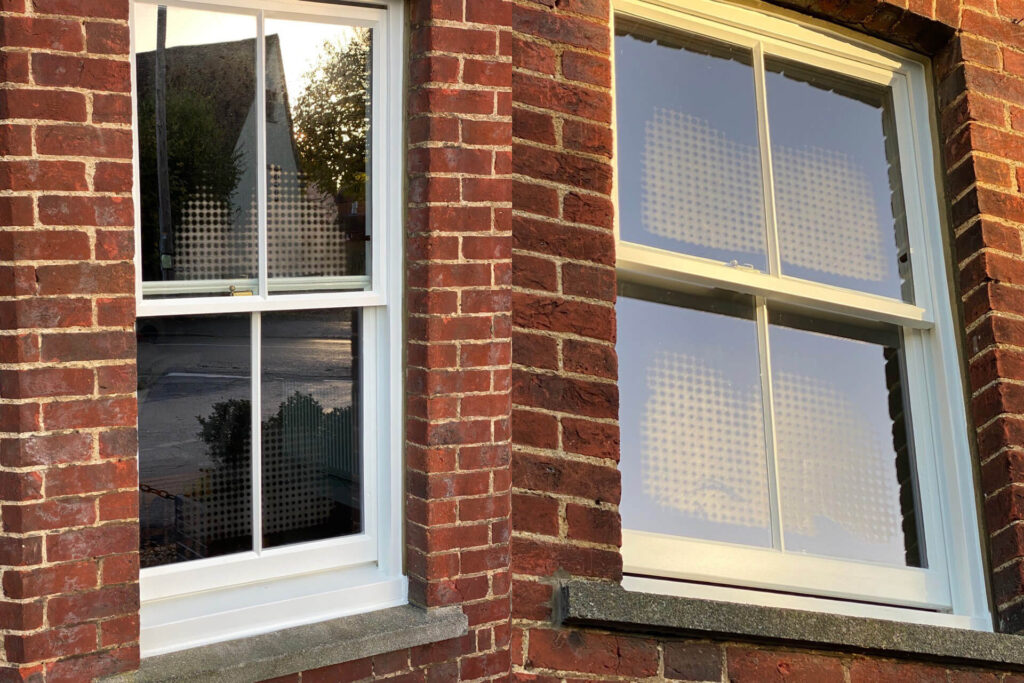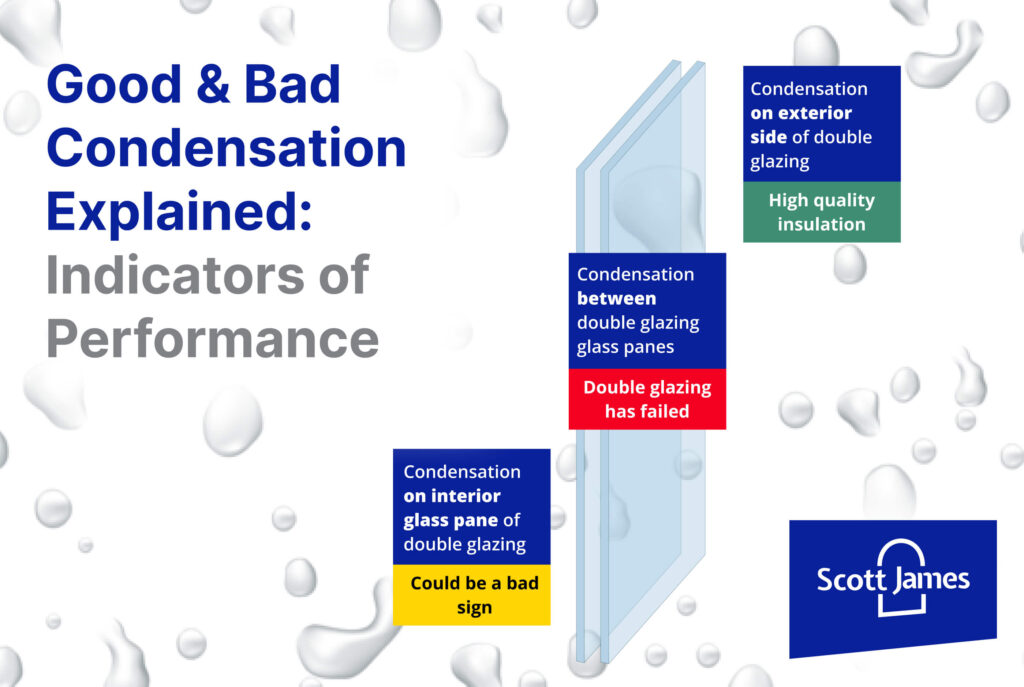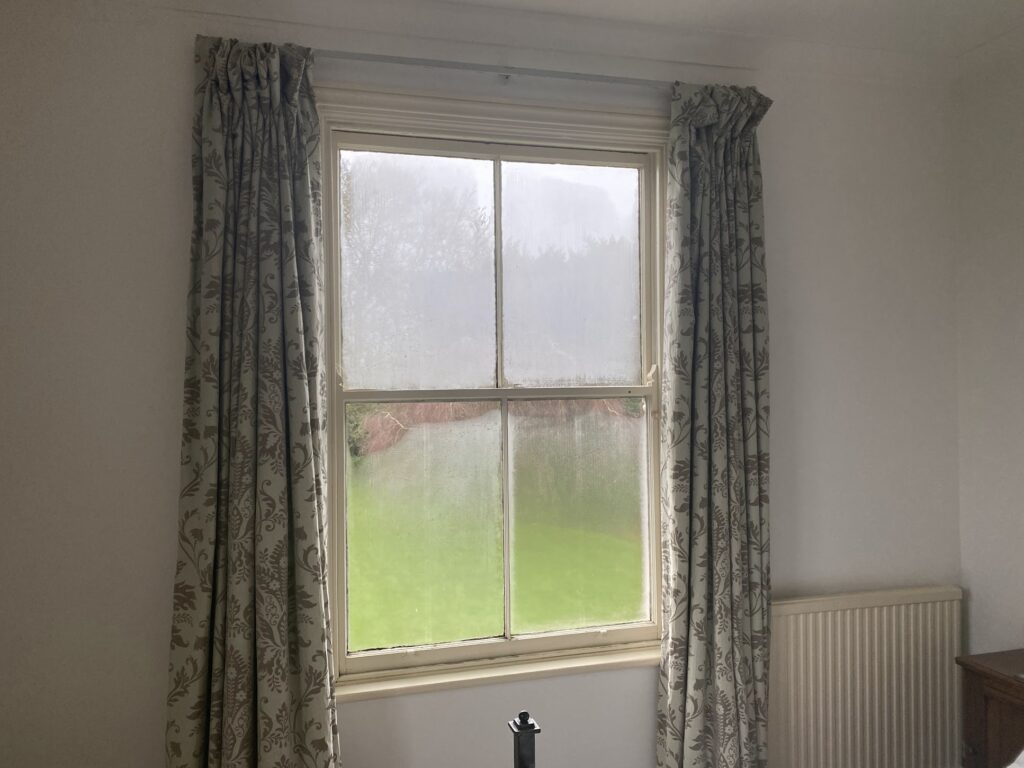
Condensation on the outside of windows may seem like a nuisance, but it is actually an indicator that your new glazing and insulation seals are working properly.
Here’s a closer look at what causes exterior window condensation and why it can be a sign of quality glazing:
What Causes Exterior Window Condensation?
Exterior condensation on vacuum double-glazed windows occurs due to the same fundamental principle as interior condensation: when warm, moist air comes into contact with a colder surface, the air temperature drops and can no longer hold as much water, so the excess moisture is deposited on the cold surface.
For exterior condensation to occur on vacuum double-glazed windows, the following conditions typically need to be in place:
- Cold Surface Temperature: The outer pane of the vacuum double glazing must be cold, often cooler than the outdoor air’s dew point. This can happen on clear nights when the window loses heat to the sky through radiation or if the outer pane is shaded while the air around is warmed by the sun.
- High Outdoor Humidity: There needs to be enough moisture in the air. High relative humidity means that the air is holding a lot of moisture, increasing the likelihood of condensation when it comes into contact with the cold window surface.
- Temperature Differential: A significant difference between the inner and outer pane temperatures is often necessary. In vacuum double glazing, the vacuum layer provides excellent insulation, leading to a larger temperature differential between the inside and outside panes compared to traditional double glazing.
- Calm Weather: Windy conditions can prevent condensation by moving air away from the window surface and disrupting the layer of moist air. Therefore, condensation is more likely to form on still days or early in the morning when it is often calmer.
- Clear Skies: On clear nights, windows can radiate their heat to the open sky, making them much cooler than the surrounding air.

Why exterior window condensation is good
It’s a sign that the vacuum double glazing is working efficiently. The inner pane is kept warm by the room’s heating, and the vacuum or gas between the panes provides good insulation, preventing the warmth from reaching the outer pane.
This makes the outer surface cold enough for condensation to form when there’s high humidity.
It’s often considered a positive attribute, as it indicates that not much heat is escaping from your house through the windows.
- It means your windows have proper insulation. If the window glass is cold enough for condensation to form on the exterior side, it’s a sign that the insulation is doing its job and preventing indoor heat from escaping through the glass. Well-insulated windows keep interior glass surfaces warmer.
- It indicates energy savings. That cold window glass also means your home isn’t losing energy through the windows. Proper insulation cuts down on energy loss and reduces heating bills in winter.
- Interior Comfort: Windows that prevent heat transfer also help maintain a steady interior climate, reducing cold drafts in the winter and heat penetration in the summer. This leads to improved comfort levels within your living space.
- Indication of window quality glazing and draught-proofing: Seeing condensation on the outside of your windows, particularly in the morning, can indicate that you have high-quality windows with good seals and no leaks.
- Reduction of internal condensation risks: Since the inner pane of the window stays warmer, there’s less likelihood of condensation forming on the inside, which could lead to black mould and mildew growth, damage to window sills, and an increase in indoor humidity levels.
Read more articles

Types of sash windows
Types of sash windows
EPC for Listed Buildings
EPC for Listed Buildings
Condensation on the outside of windows
Condensation on the outside of windows